A Moveable Feast
Inside the Mouth of a Bee
Inside the dream
Was a dream, of entering
The mouth of a bee
Round its sharp corners,
Through the slice of repeating
Patterns, into the subtle dimension
Interlaced with intricate,
Sacred geometries - to the place
Where the light bounces
Between hexagonal forms, and
Births each sweet, glistening
Drop of golden, dripping
Honey
Then out again, with the cellular grain of
Everything etched into memory,
So I remember, and I know,
How to draw a Map
to the Nest made of Rose petals,
hidden in a burrow, where the lone (solitary?)
Bee - Osmia avosetta - in the absence of a hive,
Lays each of her eggs
On a shimmering bed.
— Nico Kos Earle
A Moveable Feast
Artist: Emma Witter
TEXT: Nico Kos Earle
Photography: Gaëtan Bernède
Inside her new atelier, Emma Witter is nesting. For the longest time, she has been dreaming about working in a place like this, on a street like hers in Marylebone. The room is already full of beauty: elegant cornices frame the walls, painted a soft egg shell teal; giant shafts of light spill across the room from double sash windows onto a Victorian iron cast fireplace. Every aspect of the space is welcoming; like hearth and home, there is a sense of intimacy.
“I want you to walk in and feel immediately relieved that it’s quiet and peaceful inside. I’ve made works with that in mind, small and harmless.”
Emma considers who might have originally occupied the rooms of this Victorian mansion block. Whilst female entrepreneurs were rare before the social and political emancipation of women, at least 30% of shop owners in the fashion and homeware sector were female. “I often feel like I come from another era; not making work that is current - more aligned with an older, artisanal way. Being in this space I started thinking about artisans from the Victorian era, who often lived above their own shops. Fully integrated in the process of making, showing and selling, they also formed an integral part of the community to which they belonged.”
Living within walking distance of her atelier, Emma is fuelled by a new sense of purpose. No time is lost. Emma moves seamlessly between home and atelier, absorbed by industry: gathering, unpacking, sorting, storing; preparing the ground for new work. Found chicken bones, pulled pigs teeth, discarded clams, oyster and egg shells are unpacked and rearranged. Some pieces fit together, others don’t. Two circular tables in front of each window in her kitchen/ studio become the site of ongoing experimentation and creation. There is a culinary aspect to this work; materials are salvaged, cleaned and preserved; then graded, assembled and reconfigured. Ingredients: vials of Thames foraged bone dust, crushed glass, quail eggs, powdered shells, wire, glue.
Harmony is found in colour coding along a spectrum between the warm glow of copper wire and the chalky whiteness of petrified bones. Tones that clash are removed, textures graded. Nothing blue. These found elements have a life of their own; they speak to her imagination, or spark a peculiar knowledge, like kindling. Copper wire is used to string bleached bones together, shells are immersed with copper anodes in electrolytic baths, composed of a solution of metal salts (Copper Sulphate [CuSO4]). Their corrugated, inky surfaces are transformed with the electrochemical deposition of rosy copper. “Only someone obsessive would spend their time like this. I feel less like an artist and more like a chef or a chemist, lost in some wild experiment. This has something to do with finding a way to be an artist. I don’t want to hide away in a grubby studio and make things alone, then show them on blank walls that have nothing to do with how they were conceived. I want to be a part of this place, like a restaurant, making connections and feeding relationships.”
A new scene, one that reflects a different attitude (and ecologically awareness), is emerging. From small organic forms to elaborate commissions, and an ongoing series of works created in residency, Emma has developed a repertoire of rare forms based on a methodology that elevates found, discarded materials. Often, she works with tiny chicken bones, sourced from restaurant waste. Now regarded as her signature material, bones consist of a framework of the protein collagen, laced with calcium phosphate, that makes them strong and hard. Like a chef, Emma begins with prepping, stripping and bleaching the bones of fatty collagen to reveal a chalky mineral whiteness. “This material is both durable and very soft, crumbly even, you have to be a certain way to work with it, which is quite feminine in nature. I am interested in exploring that quiet space, and the notion of soft power.”
Whilst working, Emma thinks about what is lost, in particular the bone marrow, once hidden inside these dried things. Mostly, bones are things we do not see, but the more we think about our bones, the more attuned we become to the miracle of standing up and walking around.
“Once I worked out the process of petrification, I knew I had to work with this material, but it took time to find the right language. It was important for me to make things that did not repel people, so I really struggled with people’s reaction. There is a kind of anxiety I am trying to keep at bay, I see that whilst I have found this totally brilliant, lasting material to work with, play with, it is also very confronting for people who see the work for the first time.”
Perhaps that is where the beauty comes in. The pieces are delicate, feminine and full of light, embellished with copper, held together with the finest coils of rose metal, blooming with life. One can see the care, the attention to detail, and the way Emma’s imagination has responded to these discarded things. Knitting and binding these small elements, in repetitive actions using copper wire or electroplating, she creates strangely familiar, biomorphic sculptures. Often, her works reference botanical shapes. Clusters of flowers bloom from seeds mysteriously hidden in the bones - Memento Mori to life’s unknowable cycle. Increasingly delicate and complex, recent works take the form of nests, which might signal a response to the many shells, including eggs, she has started to incorporate into her sculptures.
A nest is a thing that holds space for something to grow, it shelters and protects. It is also species and site specific: every bird inherits a unique nest making pattern, adapting this to the materials found in its environment.
“I feel there is a real correlation between nest making and my practice: this compulsion I have to make things, in very particular repeating patterns. as if I was just born that way. There is a kind of freedom in discovering that.”
A motif that runs through many of Emma’s projects, the nest speaks to the peripatetic nature of the artist, forced to move from studio to residency, to whatever temporary space they might land in. It is also a place holder; in constant flux, a sense of belonging is hard to find. Whilst flying the ‘nest’ is a necessary step in forging our own identity, in this hyper globalised world it is easy to spin out of the natural limits of migration, and find ourselves nowhere. “This show is taking place in the same postcode where I live, and that was really important to me. I wanted to feel rooted to the place I live, and find a way to sustain my life here as a maker.”
Placed in a continuous line, like a ribbon around the room, are tiny and medium sized sculptures, many of them loosely describing the form of a nest. Wondrous strange things made out of the most unlikely materials, covered in odd blooms and toothy appendages. These works are simultaneously gorgeous and confronting - like a question one dares not ask. Who will find my bones?
Whilst preparing for this show, Emma became aware of the relationship between her interest in making work out of lost and discarded things, and the fading memory of her gran who passed during Covid19. “I seem to be drawn to specific materials that unlock certain forms of knowledge. It feels encoded in my DNA. Like the weaving of minuscule phalanges (from chicken’s feet) into sinamay fabric, which has an uncanny resemblance to my great-grandmother’s hat weaving.” One of the most ubiquitous hat-making foundations in the world, sinamay is woven from the processed stalks of the abaca tree, a genus of banana indigenous to the Philippines. Three times stronger than cotton or silk, natural abaca fabric can last over 100 years, a timescale that exceeds three generations. So much of what we make is lost, and yet there is always something that remains, a trace you can follow back in time.
Emma’s practice is haptic - responding to natural, raw elements - led by touch. Consider this bunch of grapes, which is in fact a bunch of quails eggs, on a copper stem, replete with electroplated leaves. Looking at them, we begin to question the uniform, factory made trays they are sold in, and start to think about their natural presentation. How they might sit, for example, inside the quail before she lays them? It is in noticing the equivalence of forms - round grapes and smooth eggs - that we understand how things coexist. Eggs are shaped thus, so that they can be nestled closely, without hurting each other.
“I see this more as an atelier. This is not the sacred studio of a renegade artist, but a room still magically charged with process and experiment. I wanted to make small, extraordinary things set onto dainty hand made shelves with soft edges. I want them to encircle me, placed at eye level, like a never ending horizon.” And yet… not everything is made from bones, some things are scanned replicas and 3D printed. Shapes born out of shapes.“I will never forget the first time I took something to be scanned and 3D printed. I found it amazing, but heartbreaking at the same time. Something that takes hours and hours of work can be recreated in seconds. Boom! Here you go! The speed of replication is awesome and terrifying. I am really interested in the way I try to resist this, and not fall into the multiples trap, which potentially cancels - or even disappears - the original thing.” (2.) So instead of scanning works, she tried scanning elements from which to make new works. “I prefer scans to photographs - as if you are extracting the ‘real’ image. When I brought pigs teeth to be scanned, I was told this machine was originally designed for this material: to go through bone and scan brains. Each tooth was scanned from every angle, then blown up in digital format, and finally printed it in nylon. What I love about nylon is that it is very light weight and very strong - it is weirdly similar to bone, and has a textural equivalent.”
Emma then copper plated the nylon, which hid the fact that the tooth was a replica. It is through these tiny, almost imperceptible shifts, that she points to the uncanny. “This material is really attractive - strong and so useful - but also overlooked. We only think about bones in relation to death, and yet this material is all around us, underneath us.
Emma’s work speaks to a wider anxiety about our ecological footprint and mass consumerism. By using the discarded and overlooked - chicken feet and egg shells - as building blocks for astonishingly beautiful but strange sculptures, she is showing us a little bit of universal magic. An auburn curl on the nape of her neck suggests the twist of copper wire - everything is connected. Instead of death, we find natural selection and reproduction. For in truth all that is buried nourishes the future of things - we are all made of bone dust. “I might have titled this show Many Hours of Secret Work, but I wanted to give people something to come back for, a place to gather and feast in.”







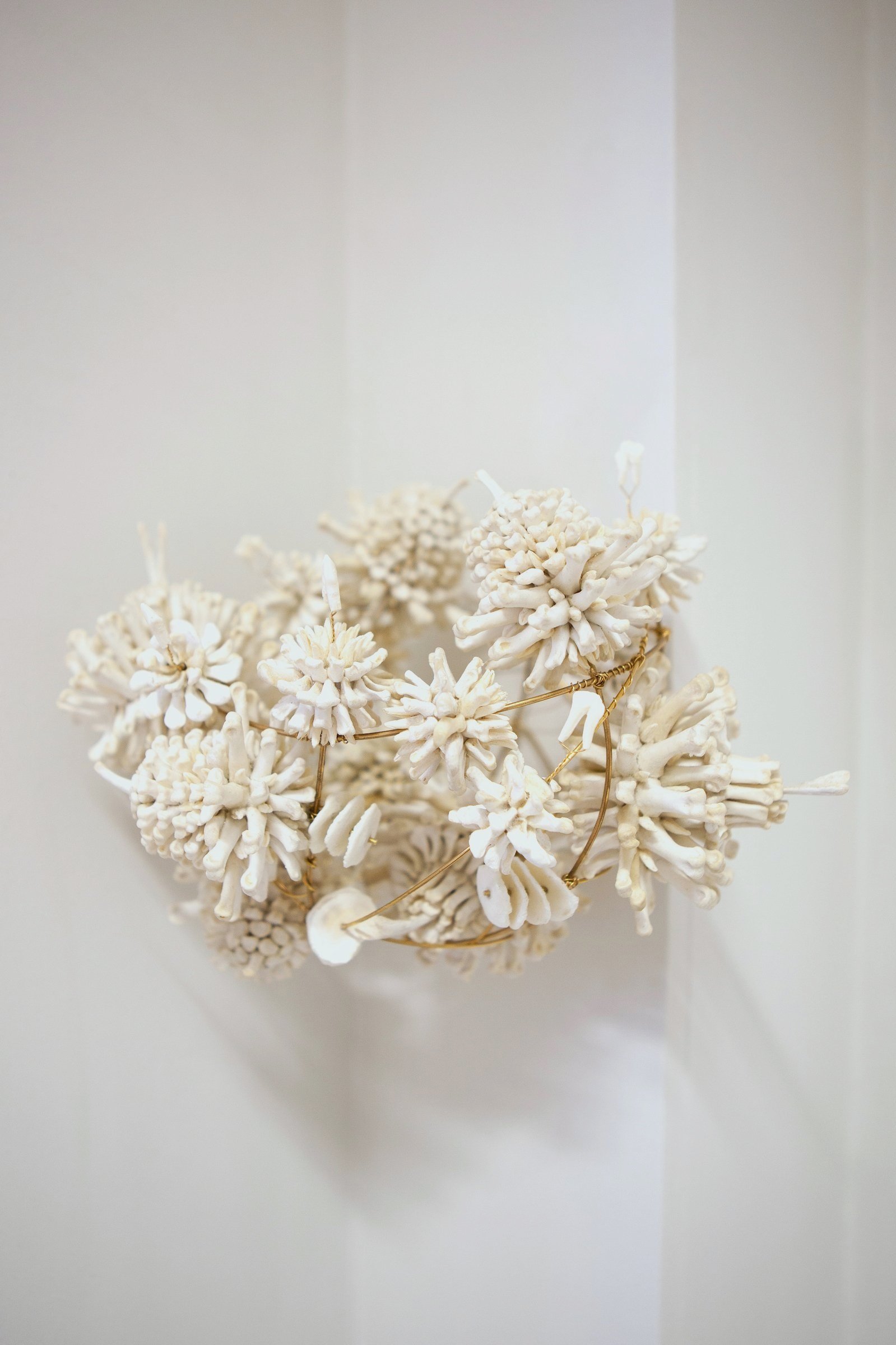
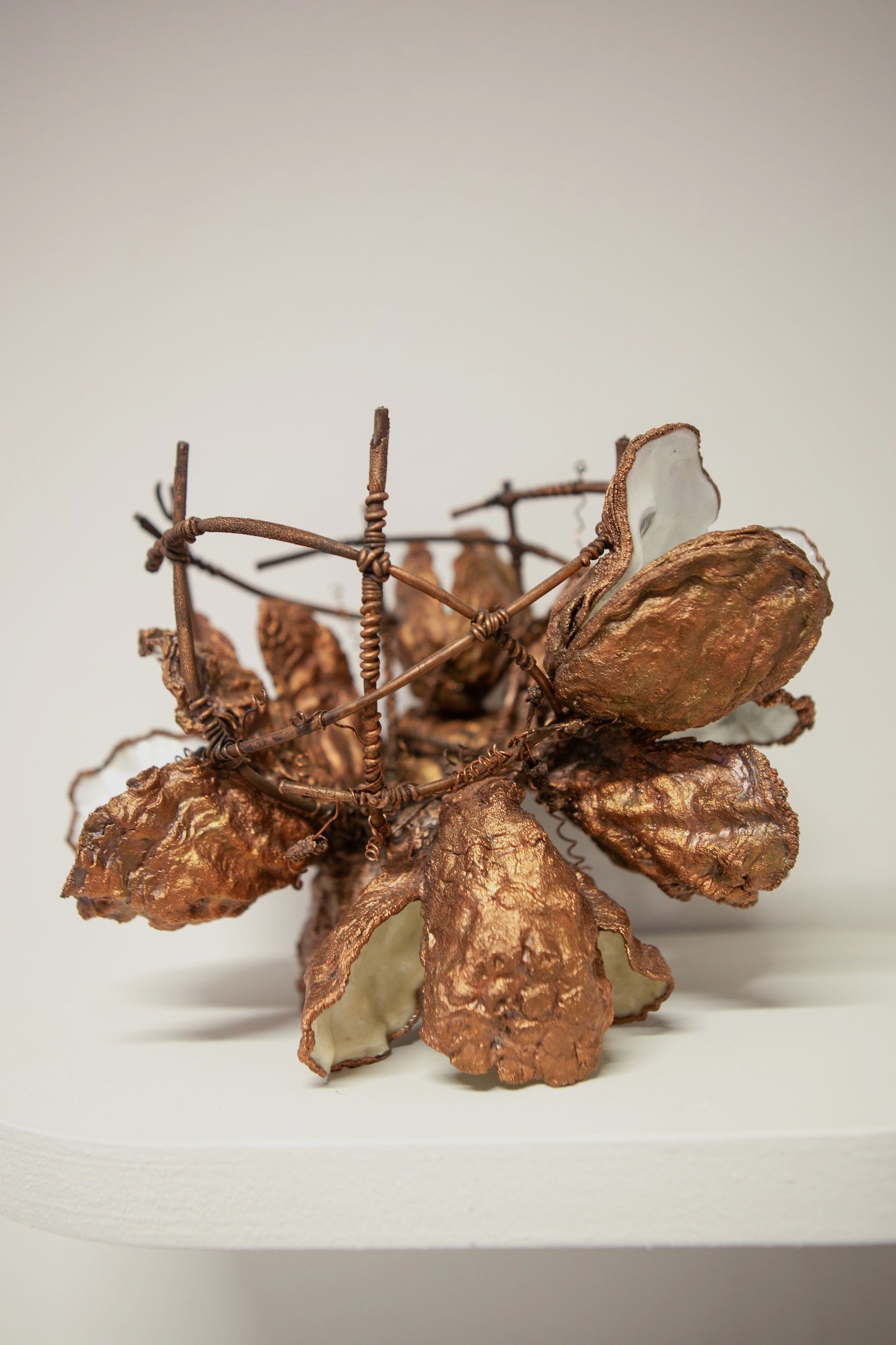
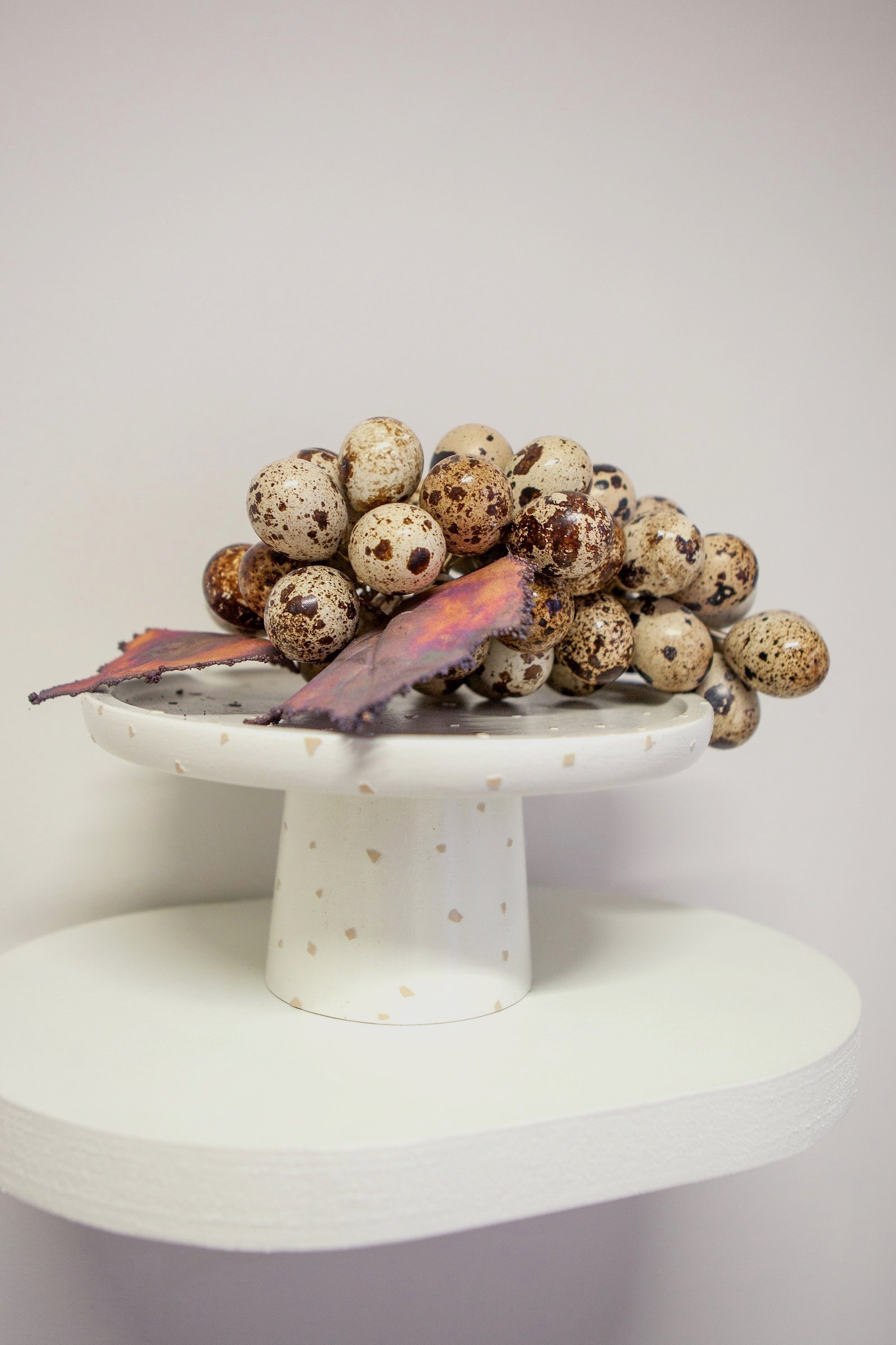
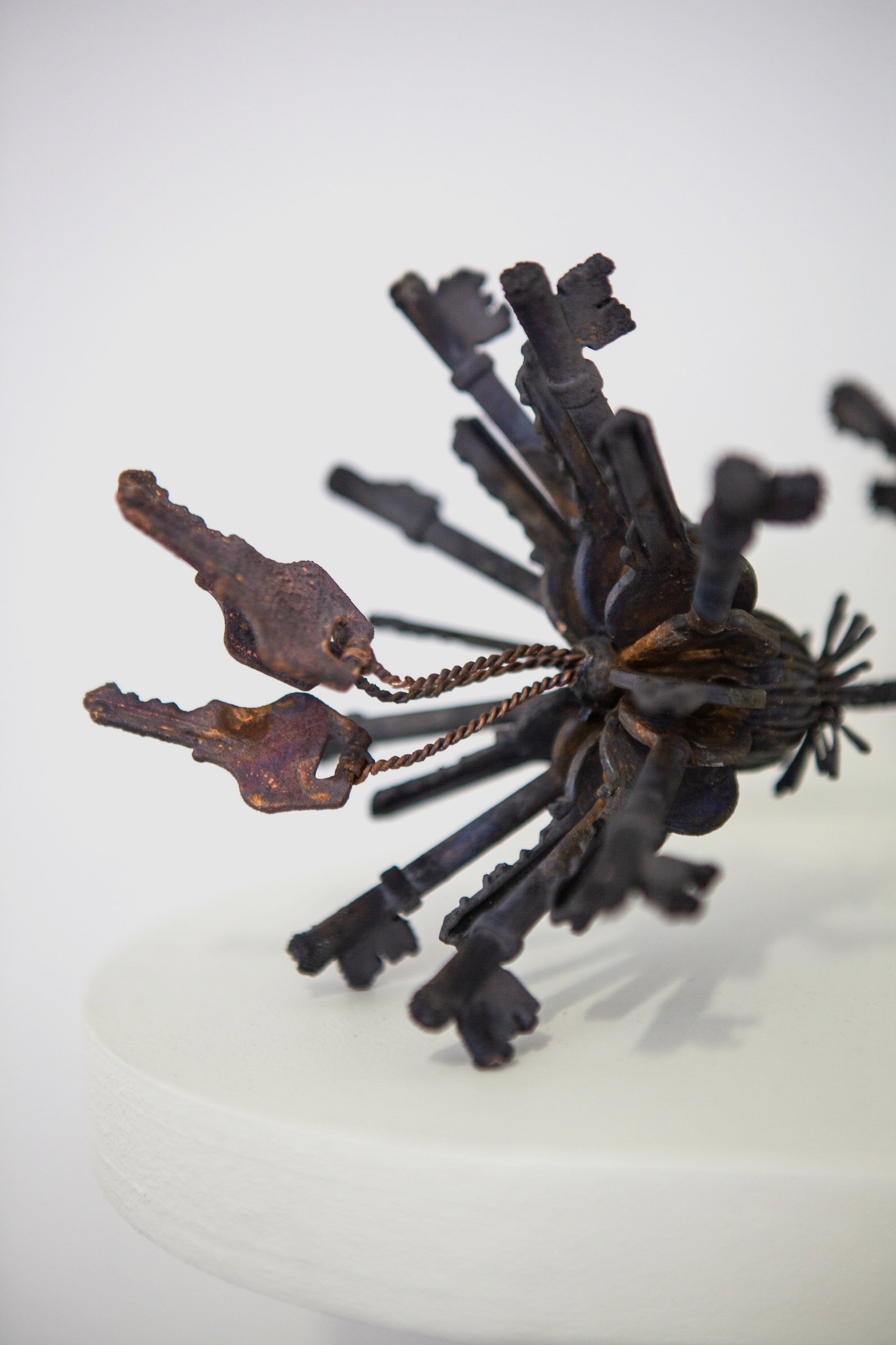
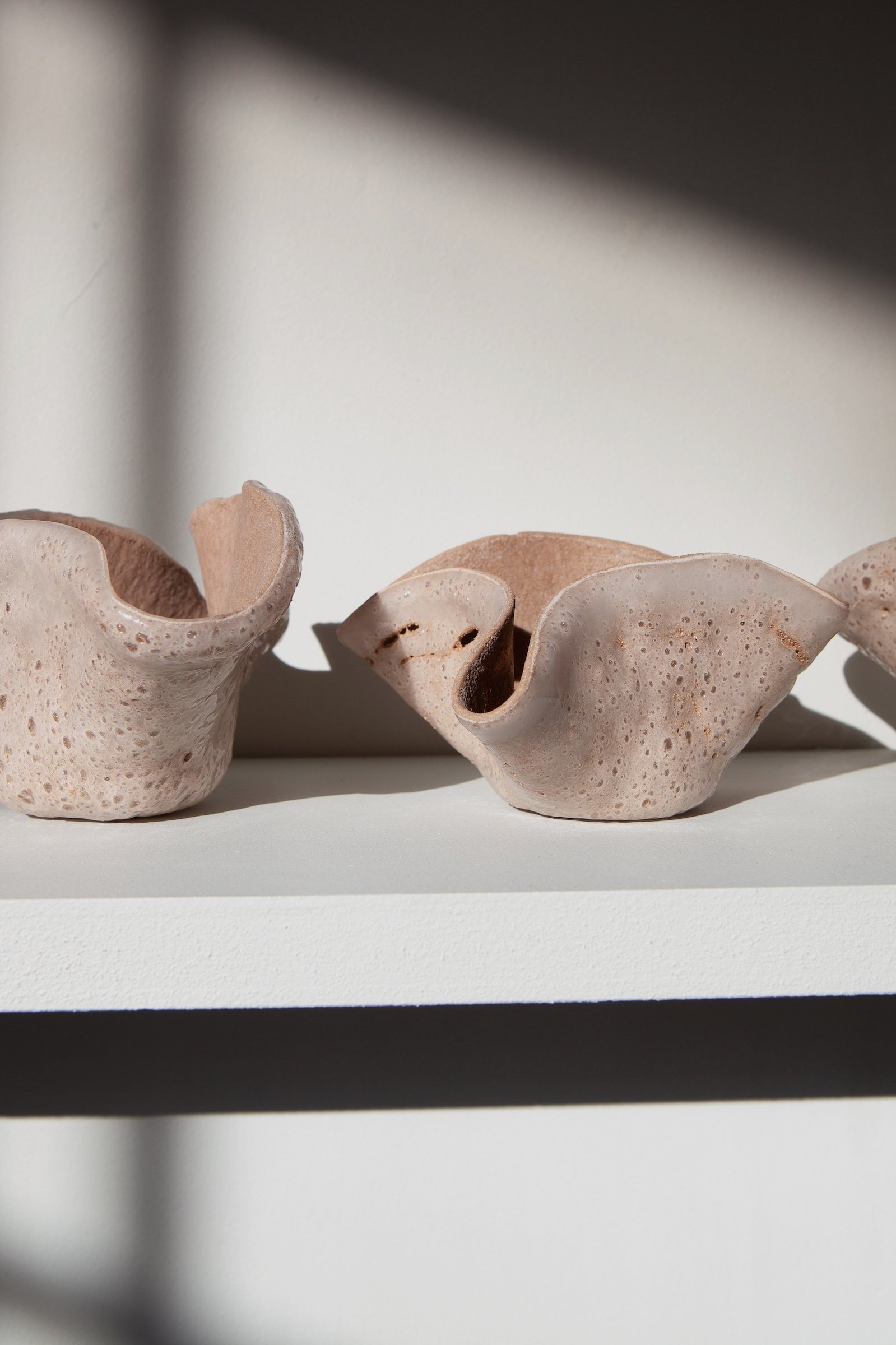

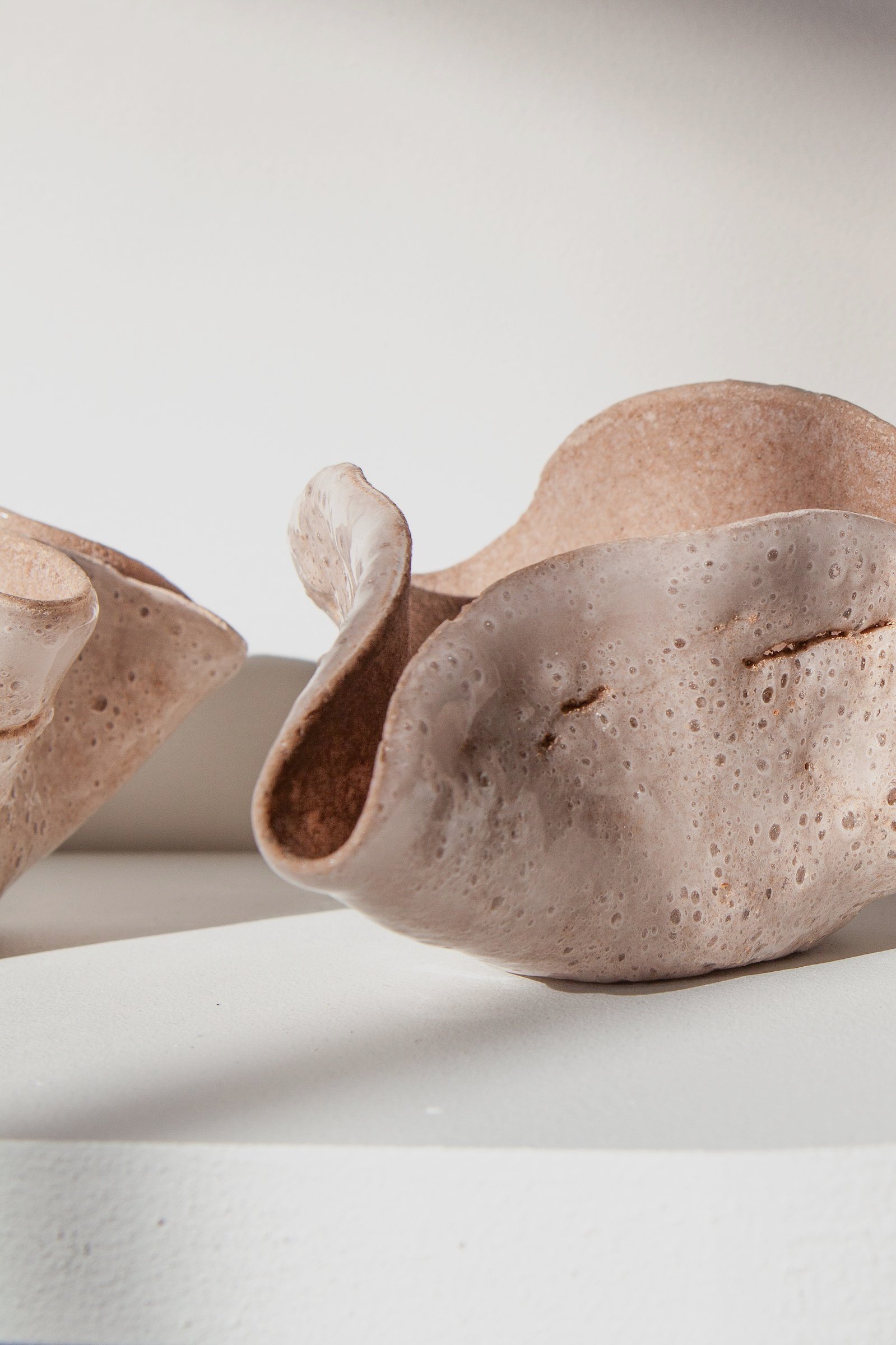





















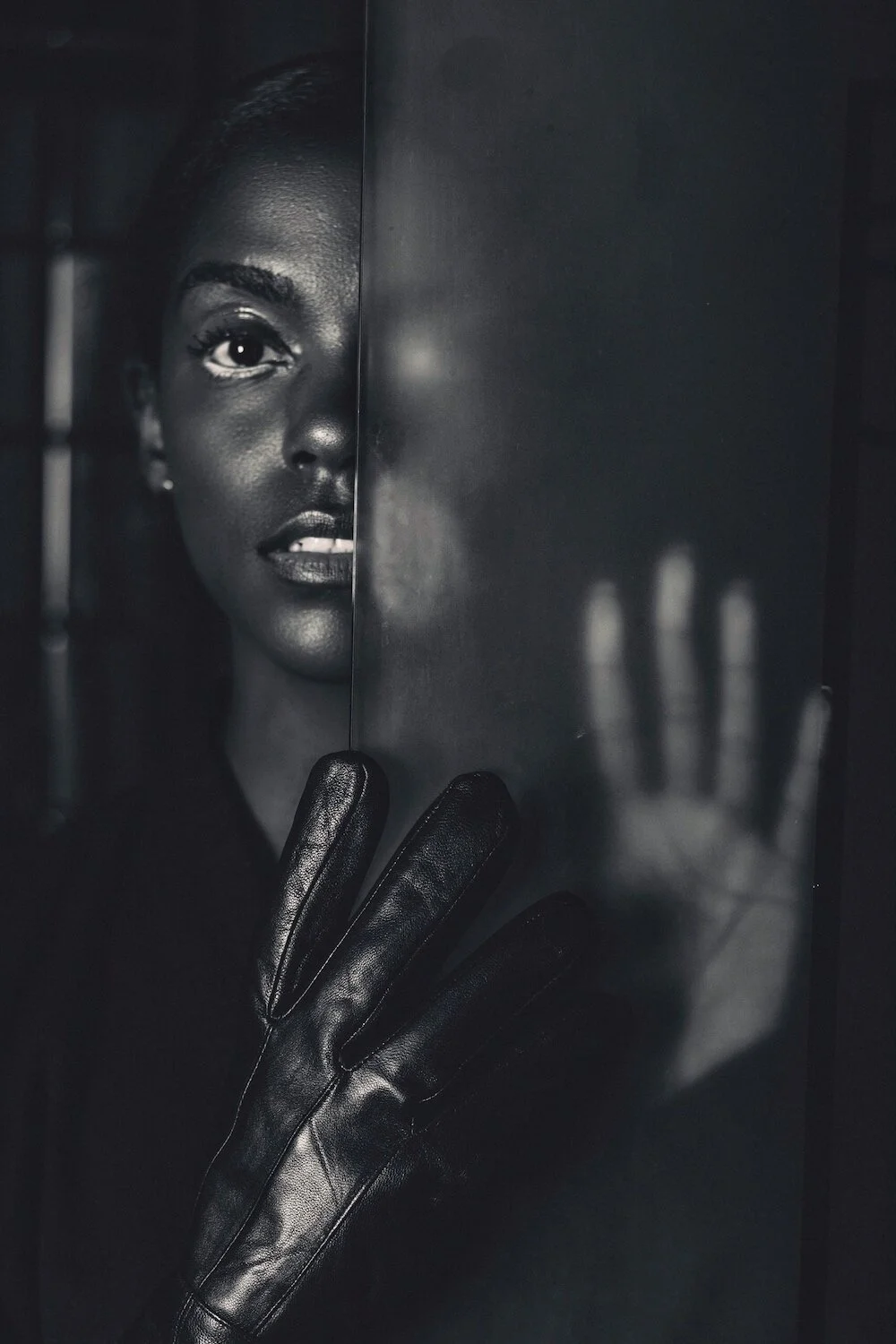







By Emma Witter & Will Bunce